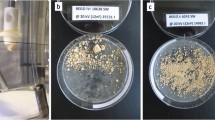Summary
Extracorporal shock wave lithotripsy has rapidly become established world wide as a routine method for treatment of nephro-and ureterolithiasis. Although initial studies showed no tissue damaging effect by the shock waves, we found in an animal experiment using canine kidneys, the ESWL induced damage to the renal parenchyma is more marked than originally assumed. The damage is limited to the area that was focused on, and heals relatively rapidly by connective tissue encapsulation with final cicatrisation without any further residual effects being observed until now. This parenchymal damage is probably also the cause of the macrohaematuria that is always observed during therapy. The resulting tissue damage is not extensive enough to cause demonstrable reduction of function as measured by the usual methods (serum creatinine, creatinine clearance, isotopy renography, i/v-urography). The main clinical complication is the large subcapsular haematoma which, according to present knowledge, could well result from a lesion of the larger peripheral vessels. Damage to other organs such as subserous colonic and small bowel haematomata are to be expected although they do not lead to clinical symptoms.
Similar content being viewed by others
References
Chaussy Ch, Eisenberger F, Wanner K, Forssmann F, Hepp W, Schmiedt E, Brendel W (1976) The use of shock waves for the destruction of renal claculi without direct contact. Urol Res 4:81
Chaussy Ch, Eisenberger F, Wanner K (1977) Die Implantation humaner Nierensteine — ein einfaches experimentelles Steinmodell. Urologe [A] 16:35–38
Chaussy Ch, Eisenberger F, Wanner K, Forssmann B (1978) Extrakorporale Anwendung von hochenergetischen Stoßwellen. Ein neuer Aspekt in der Behandlung des Harnsteinleidens — II. Teil. Aktuel Urol 9:95–101
Chaussy Ch, Forssmann B, Brendel W, Jocham D, Eisenberger F, Hepp W, Gokel JM (1980) Berührungsfreie Nierensteinzertrümmerung durch extracorporal erzeugte fokussierte Stoßwellen. In: Chaussy Ch, Staehler G (eds) Beiträge zur Urologie. Karger, Basel München
Chaussy Ch, Schmiedt E, Jocham D, Brendel W, Forssmann B, Walther V (1982) First clinical experience with extracorporeally induced destruction of kidney stones by shock waves. J Urol 127:417–420
Chaussy Ch, Schmiedt E, Jocham D, Schüller J, Brandl H (1984) Extrakorporelle Stoßwellenlithotripsie — Beginn einer Umstrukturierung in der Behandlung des Harnsteinleidens? Urologe [A] 23:25–29
Chaussy Ch, Schmiedt E (1985) Extracorporeal shock wave lithotripsie (ESWL) in the treatment of kidney and ureter stones. In: Schneider HJ (ed) Urolithiasis. Therapy. Prevention. Handbook of Urology, vol 16/II. Springer, Berlin Heidelberg New York
Chaussy Ch, Fuchs, G (1985) Erfahrungen mit der Extrakorporalen Stoßwellenlithotripsie nach fünf Jahren klinischer Anwendung. Urologe [A] 24:305–309
Deutz FJ, Fischer N, Rübben H, Lutzeyer W (1986) Die Beeinflussung des Stoßwellenfeldes durch intrarenale Störkörper. 8th Symposium on Experimental Urology, 1986, Mainz, Federal Republic of Germany
Eisenberger F, Chaussy Ch, Wanner K (1977) Extracorporale Anwendung von hochenergetischen Stoßwellen — Ein neuer Aspekt in der Behandlung des Harnsteinleidens. Aktuel Urol 8:3–15
Fischer N, Müller HM, Teichmann R, Rübben H (1986) Partikelverschleppung durch ESWL in vitro. 8th Symposium on Experimental Urology, 1986, Mainz, Federal Republic of Germany
Fischer H, Klosse HC, Rübben H, Lutzeyer W (1986) Computertomographische Frühveränderungen nach ESWL. 8th Symposium on Experimental Urology, 1986, Mainz, Federal Republic of Germany
Forssmann B, Hepp W (1980) Stoßwellen in der Medizin. Medizin in unserer Zeit 4, Heft 1
Gellissen H, Reuter HJ (1974) Erste Erfahrungen mit der elektrohydraulischen Lithotripsie von Harnleitersteinen. Z Urol 66:81–87
Hunter PT, Finlayson B, Hrko RJ, Voreck WC, Walker R, Walck S, Nasr M (1986) Measurement of shock wave pressures used for lithotripsy. J Urol 136:733–738
Jocham D, Schmiedt E (1987) Extracorporale Stoßwellenlithotripsie von Nieren-und Harnleitersteinen. Dtsch Med Wochenschr 112:85–86
Kaude JV, Williams CM, Millner MR, Scott KN, Finlayson B (1985) Renal morphology and function immediately after extracorporeal shock-wave lithotripsy. AJR 145:305–313
Konrad G, Ziegler M, Häusler E, Kaspar-Sersch U, Stein L, Wurster H, Krauss W (1979) Fokussierte Stoßwellen zur berührungsfreien Nierensteinzertrümmerung an der freigelegten Niere. Urologe [A] 18:289–293
Kopper B, Ziegler M, Konrad G, Reidlinger R, Wurster H, Goebbels R, Stoll HP (1986) Extracorporale piezoelektrische Stoßwellenlithotripsie-Epswl. 8th Symposium on Experimental Urology, 1986, Mainz, Federal Republic of Germany
Newman RC, Hackett RL, Senior DF, Brock KA, Feldman J (1986) ESWL — does it damage the kidney? AUA Kongress, Nr. 312
Muschter R, Schmeller NT, Hofstetter AG, Reimers I, Pensel J (1986) Art und Ausmaß von Nierenveränderungen nach ESWL in Abhängigkeit von der Anzahl der applizierten Schockwellen und der verwendeten Generatorspannung. 8th Symposium on Experimental Urology, 1986, Mainz, Federal Republic of Germany
Muschter R, Schmeller NT, Hofstetter AG, Reimers I, Knipper A (1986) Das Nierentrauma nach ESWL — Pathologisch-anatomische Veränderungen und die Möglichkeit ihres Nachweises durch laborchemische und röntgenologische Untersuchungsverfahren. 8th Symposium on Experimental Urology, 1986, Mainz, Federal Republic of Germany
Rubin JI, Arger PH, Pollack HM, Banner MP, Coleman BG, Mintz MC, Van Arsdalen KN (1987) Kidney changes after extracorporeal shock wave lithotripsy: CT evaluation. Radiology 162:21–24
Ruiz Marcellan FJ, Ibarz Servio L (1986) Evaluation of renal damage in extracorporeal lithotripsy by shock waves. Eur Urol 12:73–75
Schulthess G, Förster E, Jaeger P (1986) MR-imaging at 1.5 T with Gadolinium-DTPA for the study of renal morphology and function after ESWL. 6th International Symposium on Radionuclides in Nephro-Urology, 1986, Lausanne, Switzerland
Therhorst B, Cichos M, Versin F, Buss H (1975) Der Einfluß von elektrohydraulischer Schlagwelle und Ultraschall auf das Uroepithel. Urologe [A] 14:41–45
Wilbert D, Lang L, Riedmiler H, Alken P, Hohenfellner R (1986) Tierexperimentelle Untersuchungen zur Anwendung einer neuen extracorporalen Stoßwellenlithotripsie. 8th Symposium on Experimental Urology, 1986, Mainz, Federal Republic of Germany
Author information
Authors and Affiliations
Rights and permissions
About this article
Cite this article
Jaeger, P., Redha, F., Uhlschmid, G. et al. Morphological changes in canine kindneys following extra-corporeal shock wave treatment. Urol. Res. 16, 161–166 (1988). https://doi.org/10.1007/BF00256013
Accepted:
Issue Date:
DOI: https://doi.org/10.1007/BF00256013




